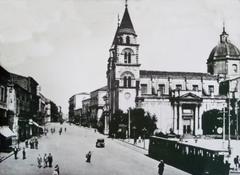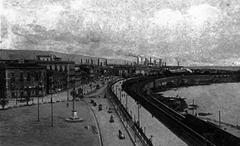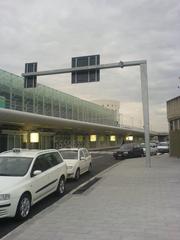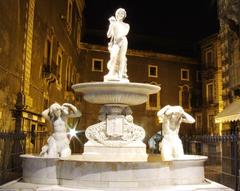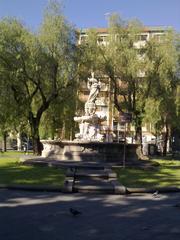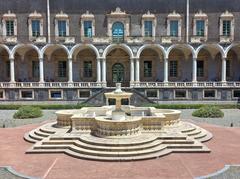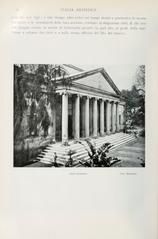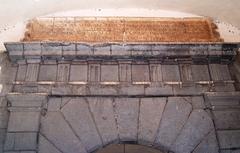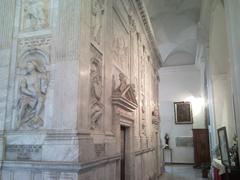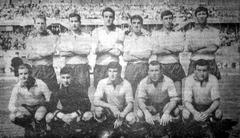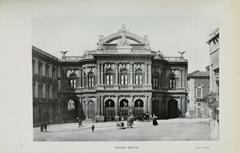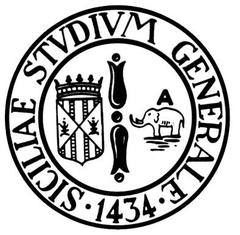Visiting Archi della Marina: Hours, Tickets, and Tips
Publication Date: 01/08/2024
Introduction to Archi della Marina
The Archi della Marina, or Arches of the Navy, is a renowned architectural marvel situated in the heart of Catania, Italy. This historical structure, dating back to the 19th century, forms an integral part of the city’s urban landscape and is a testament to Catania’s rich cultural heritage and engineering prowess. Originally constructed to support the Catania-Syracuse railway line, the arches were designed by French engineer Enrico Petit and built using a distinctive combination of volcanic rock and limestone, materials that reflect the region’s geological identity (Wikipedia). Despite facing opposition due to concerns about its impact on local mercantile activities and the coastal promenade, the viaduct stands today as a symbol of the city’s resilience and adaptability (Catania Italiani). The Archi della Marina not only served a critical infrastructural role but also transformed the port area, blending functionality with aesthetic appeal. This guide aims to provide a comprehensive overview of the Archi della Marina, including its historical significance, visitor information, travel tips, and nearby attractions, to help you make the most of your visit to this iconic landmark.
Contents Overview
- Historical Background
- Origins and Construction
- Controversies and Challenges
- Transformation of the Port Area
- Visiting Hours and Ticket Information
- Travel Tips and Nearby Attractions
- Architectural Significance and Modern-Day Relevance
- Socio-Economic Impact
- Architectural Significance
- Modern-Day Relevance
- FAQ
Historical Background of the Archi della Marina
Origins and Construction
The Archi della Marina, also known as the Arches of the Navy, are a significant architectural feature in Catania, Italy. Their construction dates back to the 19th century, specifically as part of the development of the Catania-Syracuse railway line. The project was initiated by the Società Vittorio Emanuele, a company with entirely French capital, presided over by Carlo Laffitte. This company took over from the Livornese firm Adami and Lemmi, which had initially obtained the concession for the railway lines in the Calabria and Sicily regions (Wikipedia).
The viaduct, designed by the French engineer Enrico Petit, was constructed using a combination of volcanic rock and limestone. This choice of materials not only provided structural integrity but also gave the arches their distinctive appearance, blending the dark hues of lava stone with the lighter tones of limestone. The viaduct comprises 56 arches, each uniquely crafted, with some variations in size and width (Catania Italiani).
Controversies and Challenges
The construction of the Archi della Marina was not without its controversies. The project faced significant opposition from the local administration and the Chamber of Commerce of Catania. One of the primary concerns was that the viaduct would create a “cintura di ferro” or iron belt, which would hinder the mercantile activities of the port and disrupt the city’s coastal promenade, known as the Passeggiata a mare (Wikipedia).
Additionally, the construction required the demolition of the Church of Cristo Ritrovato, a beautiful structure that stood on a lava rock promontory where Piazza dei Martiri is now located. This decision was met with resistance from the local community, who lamented the loss of a significant religious and cultural landmark (Catania Italiani).
Transformation of the Port Area
Before the mid-19th century, the area now occupied by the Archi della Marina was part of Catania’s old waterfront, known as the “marina.” This area, corresponding to today’s Via Dusmet, was a bustling hub of maritime activity. The construction of the viaduct transformed this landscape significantly. The sea, which once lapped against the arches, was partially drained and filled in during the expansion works, altering the port and the surrounding Civita district (Enjoy Sicilia).
The viaduct’s path starts from the port and ends just beyond Porta Uzeda, near the fish market. This route highlights the historical significance of the area, which was once known as the Porticello Saraceno. This stretch of sea played a crucial role in the exchange of goods, with the arches and sailing ships creating a picturesque and evocative scene in the early 20th century (Enjoy Sicilia).
Visiting Hours and Ticket Information
To explore the Archi della Marina, visitors should note that the site itself is accessible at all times, as it is part of the city’s urban landscape. However, for guided tours or special events that may be held in the vicinity, it is advisable to check with local tourist information centers or official websites for the most current schedules and ticket prices. There are no entrance fees for simply viewing the arches or walking through the area.
Travel Tips and Nearby Attractions
Travel Tips
- Getting There: The Archi della Marina is located near Catania’s historic center, making it easily accessible on foot from many central locations. If traveling by public transport, the nearest major station is Catania Centrale.
- Best Time to Visit: Early mornings or late afternoons are ideal times to visit to avoid the midday heat and capture the best lighting for photography.
- Safety: The area is generally safe, but as with any tourist location, it’s wise to keep an eye on personal belongings.
Nearby Attractions
- Catania Fish Market: Just a short walk from the arches, this bustling market offers a glimpse into the local culture and a chance to sample fresh seafood.
- Piazza del Duomo: Home to the iconic Catania Cathedral and the Elephant Fountain, this historic square is a must-visit.
- Castello Ursino: A medieval castle turned museum that showcases Catania’s rich history and art.
- Via Etnea: The main shopping street in Catania, lined with cafes, boutiques, and historical buildings.
Architectural Significance and Modern-Day Relevance
Socio-Economic Impact
The Archi della Marina have also been a symbol of socio-economic conditions in Catania. The local expression “stari sutta l’acchi ra Marina” (to be under the arches of the Marina) signifies a state of economic and social hardship. This phrase originated from the fact that, during times of severe economic crisis, the arches often provided shelter to the homeless. Today, many of the arches house stalls from the nearby fish market, adding to the area’s vibrant and bustling atmosphere (Catania Italiani).
Architectural Significance
The architectural significance of the Archi della Marina lies in their unique construction and aesthetic appeal. The use of volcanic rock, a common material in Catania due to the proximity of Mount Etna, combined with limestone, creates a striking visual contrast. This blend of materials is a testament to the ingenuity of the engineers and builders of the time. The arches not only serve a functional purpose as part of the railway viaduct but also stand as a symbol of Catania’s resilience and adaptability in the face of natural and man-made challenges (Catania Italiani).
Modern-Day Relevance
Today, the Archi della Marina continue to be a prominent feature of Catania’s urban landscape. They serve as a gateway to the city for those arriving from the south, welcoming both tourists and locals alike. The area around the arches has evolved, with modern developments coexisting alongside historical structures. Despite the changes, the arches remain a poignant reminder of Catania’s rich history and cultural heritage (Wikipedia).
In summary, the Archi della Marina are not just an architectural marvel but also a symbol of Catania’s historical and socio-economic journey. From their controversial construction to their role in transforming the port area, these arches encapsulate the spirit of a city that has continually adapted and thrived through the centuries.
FAQ
Q: What are the visiting hours for the Archi della Marina? A: The Archi della Marina is accessible at all times as part of the city’s urban landscape. For guided tours or special events, check with local tourist information centers for schedules.
Q: How much are the tickets to visit the Archi della Marina? A: There are no entrance fees for viewing the arches or walking through the area. However, guided tours or special events may have associated costs.
Q: What are some nearby attractions to the Archi della Marina? A: Nearby attractions include the Catania Fish Market, Piazza del Duomo, Castello Ursino, and Via Etnea.
Summary and Final Thoughts
The Archi della Marina is much more than a functional railway viaduct; it is a symbol of Catania’s rich historical tapestry and architectural ingenuity. From its controversial inception to its role in transforming the port area, the arches encapsulate the spirit of a city that has continually adapted and thrived through centuries of change. Today, they stand as a prominent feature of Catania’s urban landscape, welcoming both locals and tourists to explore their historical and cultural significance. Visiting the Archi della Marina offers a unique opportunity to delve into Catania’s past, appreciate its architectural beauty, and experience the vibrant atmosphere of the surrounding area. Whether you are a history enthusiast, an architecture aficionado, or simply a curious traveler, the Archi della Marina is a must-visit site that promises to leave a lasting impression. For further details and to enhance your visit, be sure to check out local guided tours and related historical sites in Catania (Catania Italiani, Enjoy Sicilia).
Sources and References
- Catania Italiani. Archi della Marina. Retrieved from Catania Italiani
- Enjoy Sicilia. Archi della Marina di Catania. Retrieved from Enjoy Sicilia
- Wikipedia. Archi della Marina. Retrieved from Wikipedia
- Usebounce. Best Time to Visit Catania. Retrieved from Usebounce
